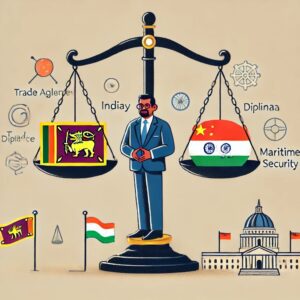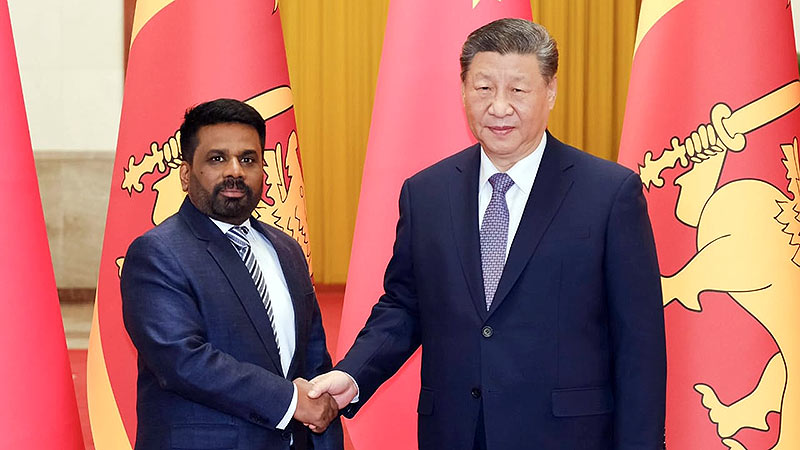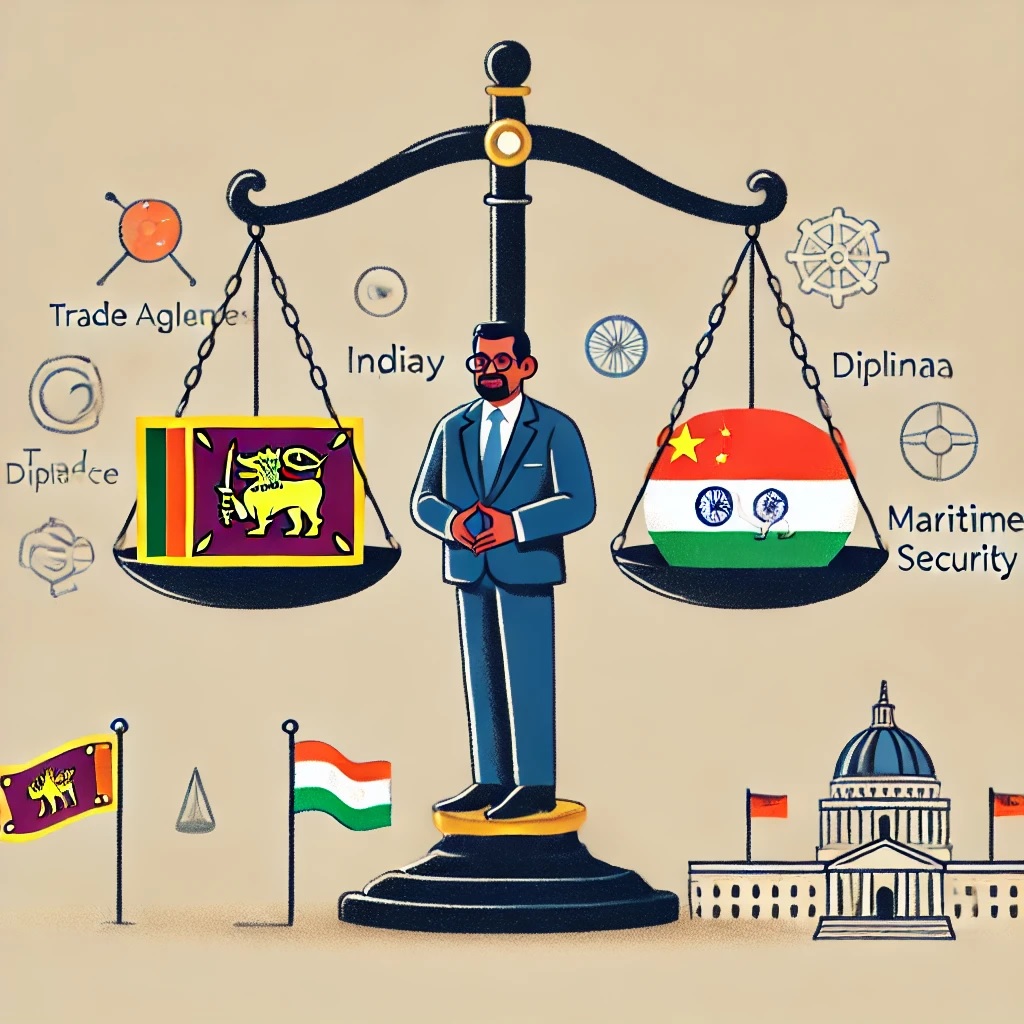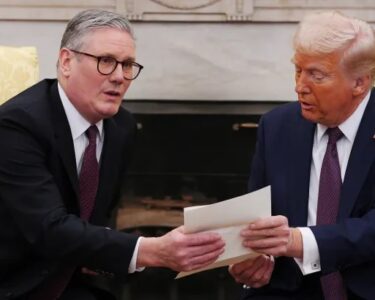Sri Lanka’s Foreign Policy : Pragmatic Balancing Act of AKD
Sri Lankan President Anura Kumara Dissanayake and his National People’s Power (NPP) coalition’s victory have disrupted the country’s political landscape, claims political analyst Kadira Pwthiyagoada . However, his administration’s foreign policy has remained consistent and predictable. For Indian policymakers, two key driving forces stand out: realism and vision. While realism necessitates India’s nuanced understanding of Sri Lanka’s core interests and a strategic approach to engagement, vision presents opportunities for long-term alignment between the two nations.

Realism: Pursuing National Interest
Dissanayake’s approach to foreign relations suggests a strong commitment to national interest. The NPP’s pragmatic stance underscores its intent to maintain Sri Lanka’s long-standing foreign policy principle—strategic autonomy. This doctrine dictates that Sri Lanka should not become overly reliant on any single foreign power, an approach that mirrors India’s own foreign policy philosophy.
A stark contrast to the Janatha Vimukthi Peramuna’s (JVP) early revolutionary years, when it opposed Indian military involvement in Sri Lanka, the NPP has adopted a more diplomatic tone towards New Delhi. During the election campaign, the party refrained from anti-India rhetoric, signaling its pragmatic orientation. Even before assuming office, Dissanayake visited Delhi at the invitation of the Modi administration, engaging with India’s External Affairs Minister and National Security Advisor. Following his electoral victory, his first official foreign visit was to India, where he and Prime Minister Modi discussed strengthening regional security cooperation and economic ties, including energy trade and infrastructure investments like the proposed pipeline between the two nations.
However, realism cuts both ways. The NPP’s decision to scrutinize an Adani renewable energy project, citing concerns over corruption, ultimately led to Adani’s withdrawal. This demonstrates the administration’s intent to safeguard national interests, even at the cost of foreign investments.
For India to advance its strategic interests in Sri Lanka, it must acknowledge and accommodate Colombo’s security and economic concerns. While joint military exercises and maritime security agreements are in place, some in Sri Lanka perceive them as disproportionately benefiting India. Addressing issues such as Indian fishing activities off Sri Lanka’s northern coast could build confidence between the two nations. Furthermore, while infrastructure projects like the proposed bridge over the Ram Setu could enhance connectivity, India must be mindful of local and regional sentiments.

Vision: Aligning Ideological and Strategic Interests
Dissanayake’s government is likely to blend its pragmatic foreign policy with elements of its leftist ideology. The NPP’s electoral success was largely due to its commitment to economic justice and pro-people policies. As a result, its interpretation of national interest will likely prioritize the welfare of the majority population—mainly the working and middle-class citizens. This ideological stance may impact Sri Lanka’s economic engagements with India, particularly in areas where deals are perceived as disproportionately favoring foreign entities.
For example, left-wing critics have raised concerns over India’s economic influence in Trincomalee and the proposed Economic and Technology Cooperation Agreement (ETCA). The Frontline Socialist Party, a JVP breakaway faction, has voiced strong opposition to these initiatives. The NPP government, given its democratic ethos, may find it difficult to ignore public discontent in the long run.

India, however, stands to benefit from the NPP’s ideological leanings. Sri Lanka’s foreign policy has historically embraced anti-imperialism, a stance that aligns with India’s vision of a multipolar world order. The NPP is likely to view India as a strategic partner in reducing dependence on Western-dominated global institutions. New Delhi can leverage this ideological commonality by emphasizing its role in advocating for the Global South on platforms like the United Nations and the G20.
One critical test of this relationship will be India’s response to China’s growing presence in Sri Lanka. While India has strategically countered Chinese influence—such as blocking a Chinese firm’s bid for a hybrid renewable energy project in the Jaffna Islands—it must tread carefully. A more accommodating approach towards Sri Lanka’s engagements with China could bolster India’s image as a responsible regional power rather than an overbearing neighbor. India’s foreign policy approach should balance strategic concerns with diplomatic flexibility, ensuring that it does not push Sri Lanka further into Beijing’s orbit.
A Delicate Balancing Act
Sri Lanka has long been viewed as a potential regional success story, despite its tumultuous history. The extent to which Dissanayake can balance three key pillars—security and economic prosperity, the NPP’s socialist principles, and public sentiment—will determine his government’s success.
For India, understanding how the NPP’s ideological and strategic considerations shape its foreign policy is crucial. Respecting Sri Lanka’s economic sovereignty, acknowledging its multipolar aspirations, and engaging diplomatically rather than coercively will be key to maintaining strong bilateral ties. If navigated wisely, this dynamic could not only strengthen India-Sri Lanka relations but also enhance India’s broader geopolitical standing in the region.
By appealing to Sri Lanka’s vision for a multipolar world, India can foster goodwill and deepen its strategic partnership with Colombo, ultimately advancing its own ambitions as an emerging global power.







